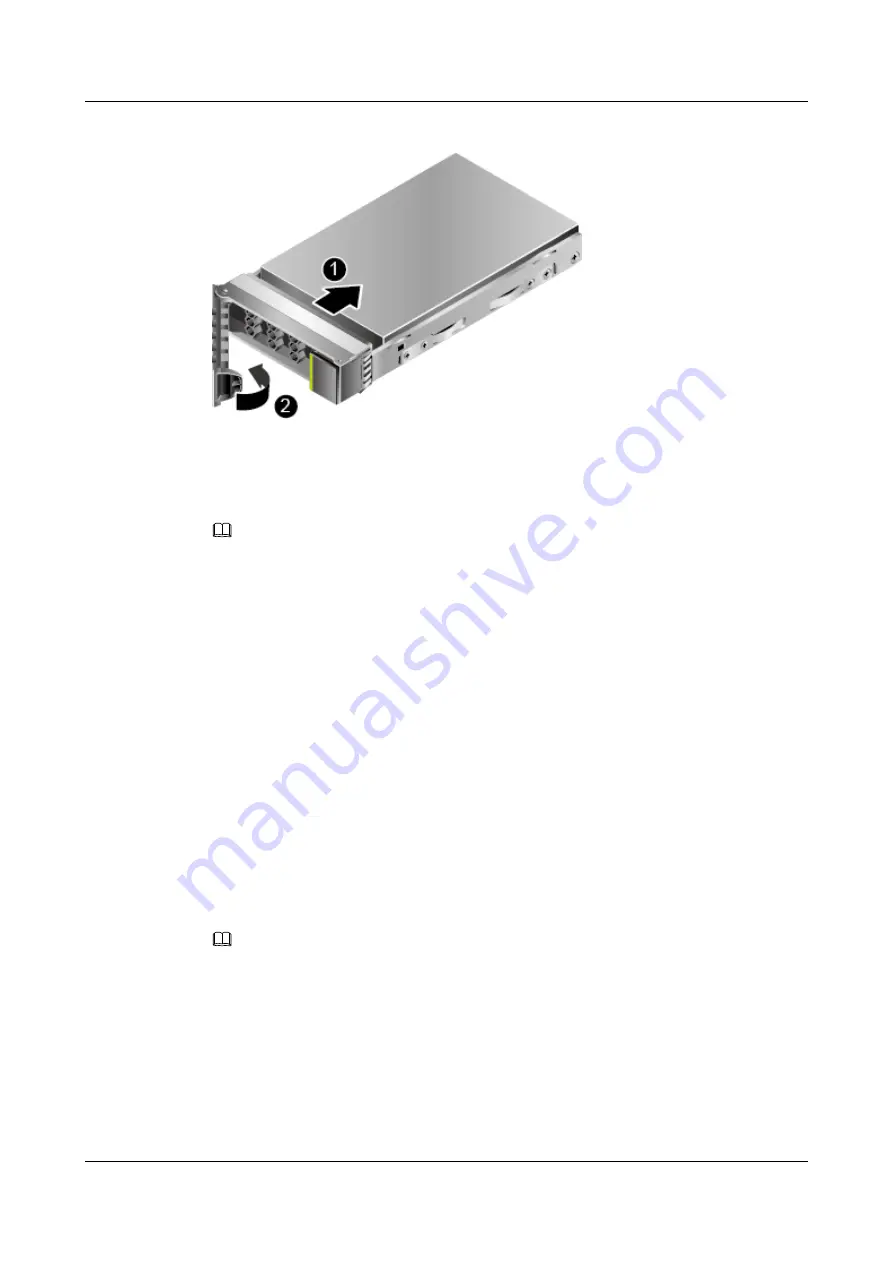
Figure 3-24
Installing a drive
Step 5
Check the running status of the drive by observing its indicators.
.
Step 6
Restore the drive data.
NOTE
Perform this operation only when you replace a drive.
For details, see
Troubleshooting
>
Hard Drive Fault
----End
3.15 Removing an NVMe Drive
l
If the VMD function is enabled and the latest Intel RSTe driver is installed, the NVMe
drives support surprise hot swap.
–
For details about how to enable the VMD function, see
–
Install the Intel RSTe driver. For details, see
Huawei V5 Server RAID Controller
l
If the VMD function is disabled, the NVMe drives support only orderly hot swap.
For details about how to disable the VMD function, see
.
Procedure (VMD Enabled)
NOTE
l
Intelligent Computing Compatibility Checker
to obtain information about the operating
systems supported by the VMD function.
l
Before removing an NVMe drive:
l
Stop accessing the NVMe drive.
l
Back up date of the NVMe drive to prevent data loss.
l
Remove the NVMe drives one by one. Remove the next NVMe drive only after the previous one is
removed completely.
l
If the OS is RHEL 7.3 and the VMD function is enabled, the OS kernel 3.10.0-514.el7.x86_64 must
be used for surprise hot swap of NVMe drives. Otherwise, the operating system may restart.
FusionServer Pro CH121 V5 Compute Node
Maintenance and Service Guide
3 Basic Operations
Issue 06 (2019-08-10)
Copyright © Huawei Technologies Co., Ltd.
31
















































